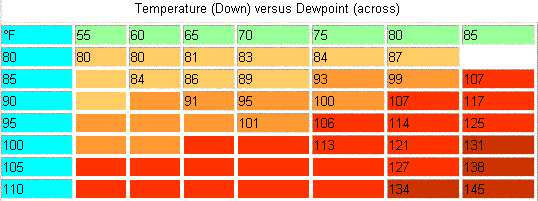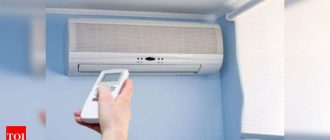
Is it OK to run AC at 28 degrees in summer?
In the scorching heat of summer, reaching for the AC remote to cool down our homes and offices has become second nature. But what temperature should we set our air conditioners to?
Many experts recommend setting the AC at around 24-26 degrees Celsius (75-78 degrees Fahrenheit) for optimal comfort and energy efficiency. However, some people prefer a cooler environment and set their ACs as low as 22 degrees Celsius (72 degrees Fahrenheit).
But what about those who prefer to set their ACs at a higher temperature, like 28 degrees Celsius (82 degrees Fahrenheit)? Is it acceptable to have the AC run at this temperature in summer?
Setting the AC at 28 degrees Celsius can be a matter of personal preference and tolerance to heat. While it may not provide the same level of cooling as a lower temperature setting, it can still make the environment more comfortable and help reduce energy consumption.
It’s worth noting that setting the AC at a higher temperature means that the unit doesn’t have to work as hard to cool the room, resulting in lower energy bills. Additionally, running the AC at a higher temperature can be more environmentally friendly and help reduce our carbon footprint.
Ultimately, the decision on what temperature to set the AC at in summer depends on individual preferences, tolerance to heat, and considerations for energy consumption. It’s important to find a balance that is comfortable and sustainable for both our comfort and the planet.
Factors to Consider When Setting Air Conditioning in Summer
When the summer heat is running high, it can be tempting to set the air conditioning to a cool temperature, such as 28 degrees Celsius. However, there are several factors to consider before making this decision.
- Energy Efficiency: Setting the air conditioning to a lower temperature requires the unit to run longer, consuming more energy. This can lead to higher electricity bills and a negative impact on the environment.
- Comfort: Different individuals have different comfort levels. While 28 degrees Celsius might be fine for some, others may find it too warm and uncomfortable.
- Health: Extremely low temperatures from the air conditioning can cause health issues, such as dry skin, sinus problems, and headaches. It’s important to find a balance that keeps you cool without compromising your well-being.
- Adaptation: When transitioning from the outdoor heat to an air-conditioned room, a sudden drop in temperature can be a shock to the system. Gradually adjusting the temperature can help the body adapt and prevent any discomfort.
- Environmental Impact: Air conditioning releases greenhouse gases, contributing to climate change. By setting the temperature a bit higher, you can help reduce your carbon footprint and contribute to a more sustainable future.
- Cost: Running the air conditioning at a lower temperature for extended periods can significantly increase your energy costs. By finding a comfortable yet efficient temperature setting, you can save money in the long run.
Considering these factors, it’s important to weigh the pros and cons before setting the air conditioning at 28 degrees Celsius. Finding a balance that takes into account energy efficiency, comfort, health, and sustainability can result in a more enjoyable and responsible summer cooling experience.
Evaluating the Optimal Temperature for Air Conditioning
When it comes to setting the temperature for air conditioning, finding the right balance is crucial. While it may be tempting to blast the AC at a chilly 28 degrees, there are a few factors to consider before doing so.
Firstly, it’s important to note that setting the AC to such a low temperature might not be energy efficient. Air conditioners work by removing heat from the air, and the lower the temperature is set, the harder the AC has to work to achieve it. This can result in higher energy consumption and increased electricity bills.
Secondly, setting the AC too low may not be ideal for personal comfort. While some individuals may find 28 degrees comfortable, others may feel too cold. It’s best to find a temperature that suits the majority of occupants in the space.
An AC running at 28 degrees continuously may also lead to overcooling. This can cause issues such as discomfort, dryness of the air, and potential health problems like cold and flu symptoms.
Therefore, it is generally recommended to set the air conditioning temperature at a moderate level, around 22-24 degrees Celsius. This provides a comfortable environment without straining the AC or causing discomfort to individuals in the space.
Energy Consumption and Cost of Cooling
When the temperature rises during the summer, many people turn on their air conditioning (AC) units to cool their homes. However, setting the AC to run at 28 degrees can result in higher energy consumption and costs.
The higher the desired temperature, the longer the AC unit will need to run to cool the room to 28 degrees. This prolonged operation will consume more electricity, leading to increased energy usage.
In addition, running an AC unit at such a low temperature can cause the compressor to work harder and longer, which can lead to higher maintenance and repair costs in the long run.
It is recommended to set the AC to a higher temperature, such as 24 or 25 degrees, to reduce energy consumption and save on cooling costs. This moderate temperature will still provide a comfortable indoor environment without straining the AC unit.
Moreover, it is worth considering alternative ways to cool the home, such as using fans, opening windows during cooler hours, or using shades and curtains to block out sunlight. These methods can help reduce energy consumption and lessen the reliance on air conditioning.
By being mindful of the temperature setting and exploring other cooling options, individuals can not only save on energy costs but also contribute towards environmental conservation by reducing their carbon footprint.
The Impact of Air Conditioning on Human Health
During the hot summer months, it is common for people to use air conditioning to keep cool. However, setting the air conditioner at low temperatures, such as 28 degrees, can have negative effects on human health.
Running the air conditioner at extremely low temperatures for prolonged periods of time can cause a variety of health issues. One of the main concerns is dehydration. When the air conditioner is set at a very low temperature, it can remove moisture from the air, leading to dryness in the throat and nasal passages. This can result in throat irritations, dry coughs, and even nosebleeds.
In addition to dehydration, air conditioning can also have an impact on respiratory health. Breathing in cold air for extended periods can cause the airways to constrict, leading to difficulty in breathing. This can be particularly problematic for individuals with respiratory conditions, such as asthma, as it can trigger or worsen symptoms.
Furthermore, spending excessive time in air-conditioned environments can also affect the immune system. The drastic change in temperature between indoor and outdoor settings can weaken the body’s natural defenses, making individuals more susceptible to various illnesses and infections.
While it may feel comfortable to set the air conditioning at 28 degrees in summer, it is important to consider the potential negative impacts on human health. It is recommended to set the air conditioner at a moderate temperature, around 24-26 degrees, to ensure a balance between comfort and avoiding health issues.
Comfort vs Environmental Impact
When it comes to setting the air conditioning (AC) temperature in the summer, finding the right balance between comfort and environmental impact is important. While setting the AC at 28 degrees may seem OK for personal comfort, it can have negative consequences.
Running the AC at such a high temperature puts a significant demand on energy resources. The cooling process requires a lot of electricity, which is often produced by burning fossil fuels. This contributes to air pollution and greenhouse gas emissions, worsening the effects of global warming.
Lowering the AC temperature to more reasonable levels, such as 24 or 25 degrees, can still provide comfort while reducing the environmental impact. Every degree matters when it comes to energy conservation and reducing carbon emissions.
Moreover, setting the AC at extremely high temperatures can strain the unit itself, causing it to work harder and potentially lead to breakdowns and repairs. This not only impacts the environment but also increases financial costs for repairs and maintenance.
To find the right balance, it is recommended to use other methods of cooling, such as fans or natural ventilation, before resorting to the AC. This can help to reduce the amount of time the AC needs to run, further lowering the impact on the environment. Additionally, using energy-efficient AC units and regularly servicing them can also help to minimize the environmental footprint.
In conclusion, while setting the AC at 28 degrees may provide immediate comfort, considering the environmental impact is crucial. By adjusting the temperature to more reasonable levels, exploring alternative cooling methods, and utilizing energy-efficient technology, we can find a balance between personal comfort and reducing our impact on the environment.
How to Maintain an Ideal Indoor Temperature
During the hot summer months, it’s important to maintain an ideal indoor temperature to stay comfortable. Setting your air conditioning at 28 degrees can help achieve this, but it’s essential to use it efficiently to ensure energy conservation and cost-effectiveness.
To maintain an ideal indoor temperature of 28 degrees, follow these tips:
|
1. Insulate your home: Proper insulation can keep the cool air inside your home and prevent it from escaping, allowing your air conditioning to run efficiently. |
|
2. Use curtains or blinds: Close curtains or blinds during the daylight hours to block out the sun’s heat. This will help keep your home cool and reduce the load on your air conditioning. |
|
3. Regularly clean your air conditioning unit: A clean AC unit will function more effectively. Regularly clean or replace the filters, and have professional maintenance performed to ensure optimal performance. |
|
4. Utilize fans: Using fans alongside your air conditioning can help distribute cool air throughout the room more efficiently. Ceiling fans can also create a gentle breeze that enhances comfort. |
|
5. Optimize your AC run time: Set timers or programmable thermostats to adjust your air conditioning unit’s run time based on when you are typically home or need it the most. This will help conserve energy and save costs. |
By following these tips, you can maintain an ideal indoor temperature of 28 degrees during summer, ensuring comfort and energy efficiency. Remember, it’s crucial to use your air conditioning system responsibly to conserve energy and reduce environmental impact.
Effects of Air Conditioning on Humidity Levels
When it comes to running your AC, especially during the hot summer months, setting it at 28 degrees may seem like an okay choice. However, it’s important to consider the effects that air conditioning can have on humidity levels.
One of the main benefits of having an air conditioner is that it helps to remove excess moisture from the air, thus reducing humidity levels. This can be particularly beneficial in areas with high humidity, as it helps to create a more comfortable living environment.
However, it’s worth noting that setting your AC at 28 degrees can have its drawbacks when it comes to humidity levels. The reason for this is that the higher the temperature you set your AC to, the longer it will run to reach that desired temperature.
During this extended running time, the AC has more time to remove moisture from the air, thus potentially decreasing the humidity levels even further. While this may not be an issue for some, it can lead to a drier indoor environment for others.
In a drier indoor environment, you may experience symptoms such as dry skin, dry eyes, and even respiratory issues. Additionally, low humidity levels can also lead to static electricity buildup, which can be frustrating and even damaging to certain electronics.
- Reduced humidity levels caused by excessive AC use can lead to dry skin and dry eyes.
- Low humidity levels can also cause respiratory issues and discomfort for some individuals.
- Static electricity buildup can occur in a drier indoor environment, potentially damaging electronic devices.
Therefore, it’s important to find a balance when setting your AC temperature, taking into consideration both your personal comfort and the humidity levels in your area. Regularly monitoring and adjusting the temperature as necessary can help maintain a comfortable and healthy indoor environment during the summer months.
Tips for Setting the Temperature at Night
Deciding on the appropriate temperature for your air conditioning system at night can be a tricky task. You want to ensure you are comfortable while also being mindful of energy consumption and costs. Here are some tips to help you find the right balance:
1. Run the AC at a comfortable temperature: It is perfectly acceptable to set your air conditioning system to 28 degrees in the summer. This temperature allows for a cool and comfortable environment without excessively straining your AC unit.
2. Consider your personal preferences: Everyone has different comfort levels, so don’t be afraid to adjust the temperature based on your needs. If you tend to get cold easily, you may want to set it a bit higher. On the other hand, if you prefer a cooler sleeping environment, you can set it a bit lower.
3. Keep in mind energy efficiency: While it’s important to stay comfortable, consider the impact on your energy consumption. Setting the temperature a couple of degrees higher can save energy and reduce your utility bills. Additionally, using ceiling fans or a programmable thermostat can help circulate cool air throughout the room without solely relying on the AC.
4. Experiment and find your ideal temperature: Everyone’s ideal sleeping temperature is different, so don’t be afraid to experiment and find what works best for you. Start with 28 degrees and adjust it up or down based on your comfort level. Keep in mind that consistency in temperature can also help regulate your sleep patterns.
5. Use additional sleep aids if needed: If you find that the temperature alone is not enough to ensure a restful sleep, consider using additional sleep aids such as breathable bedding, blackout curtains, or a white noise machine. These can help create a more comfortable sleep environment regardless of the temperature setting.
In summary, setting your air conditioning system at 28 degrees in the summer is perfectly okay for a comfortable night’s sleep. However, make sure to consider your personal preferences and energy efficiency when determining the ideal temperature. Experiment and find what works best for you to create a pleasant sleeping environment.
The Relationship Between Air Conditioning and Sleep Quality
AC, or air conditioning, plays a crucial role in ensuring comfortable sleep during the summer months. The temperature at which you set the AC can have a significant impact on the quality of your sleep. Setting the AC at 28 degrees Celsius can be a good starting point to achieve a balance between comfort and energy efficiency.
During summer nights, temperatures can rise to uncomfortable levels, making it difficult to fall asleep and maintain a deep sleep throughout the night. Research shows that the ideal sleep temperature for most people is between 18 and 22 degrees Celsius. When the ambient temperature is higher than this range, it can lead to restlessness, excessive tossing and turning, and frequent awakenings during the night.
Setting the AC at 28 degrees Celsius provides a cooler environment compared to the outdoor temperature, but it still allows for some warmth which can aid relaxation and sleep. It is important to note that individual preferences may vary, and some people might find 28 degrees Celsius too warm for optimal sleep. Experimenting with different temperatures and finding the one that works best for you is crucial.
Running the AC at a higher temperature like 28 degrees Celsius during the summer can also help in reducing energy consumption and lowering electricity bills. By setting the AC at a slightly higher temperature, you can strike a balance between comfort and energy efficiency.
Additionally, it is important to consider other factors that can affect sleep quality, such as humidity and noise. AC units that have built-in features to control humidity levels and operate silently can further enhance sleep quality.
| • Provides a cooler environment for better sleep • Helps in reducing energy consumption • Balances comfort and energy efficiency |
• May not be suitable for everyone’s sleep preferences • Some individuals may find it too warm for optimal sleep |
In conclusion, setting the AC at 28 degrees Celsius in summer can provide a comfortable sleeping environment while promoting energy efficiency. However, it is important to consider individual preferences and adjust the temperature accordingly to optimize sleep quality.
The Psychological Aspect of Air Conditioning
During the scorching summer months, air conditioning (AC) becomes an essential part of our lives. With temperatures reaching unbearable highs, it’s natural to want to stay cool and comfortable. However, the question of setting AC at 28 degrees has sparked debate.
Psychologically, the temperature at which we set our AC can have a significant impact on our well-being. For some individuals, a lower temperature like 28 degrees is necessary for them to feel comfortable and relaxed. The difference in perception can vary from person to person, as some may feel refreshed and content in a cooler environment.
However, it’s important to consider the consequences of setting AC at such a low temperature. Running the AC at 28 degrees may lead to increased electricity consumption, resulting in higher energy bills. This can cause financial stress for some individuals, especially during the summer months when energy usage tends to spike.
Furthermore, setting AC at 28 degrees may not be environmentally friendly. The excessive use of energy contributes to carbon emissions and exacerbates climate change. It is crucial to find a balance between staying comfortable and considering the impact of our actions on the environment.
Ultimately, whether setting AC at 28 degrees is acceptable depends on individual preferences and circumstances. It’s vital to be mindful of the psychological effects and potential drawbacks associated with a lower temperature setting. Finding a compromise between comfort, energy efficiency, and environmental responsibility is key in making an informed decision.
Temperature Guidelines for Different Rooms
When it comes to setting the air conditioning (AC) temperature in different rooms during the summer, it is important to find the right balance between comfort and energy efficiency. Here are some temperature guidelines for different rooms:
– Bedrooms: It is generally recommended to set the AC temperature between 19 to 22 degrees Celsius (66 to 72 degrees Fahrenheit) in bedrooms. This range allows for a cool and comfortable sleep environment without excessive energy consumption.
– Living Room: The ideal temperature for the living room can vary depending on personal preferences, but a range of 22 to 24 degrees Celsius (72 to 75 degrees Fahrenheit) is usually considered comfortable. This temperature range strikes a balance between staying cool and avoiding excessive energy usage.
– Kitchen: Since the kitchen tends to generate heat from various appliances, setting the AC temperature slightly higher is generally acceptable. A range of 24 to 26 degrees Celsius (75 to 79 degrees Fahrenheit) should be sufficient to keep the kitchen comfortable while cooking without overloading the AC.
– Home Office: For those who work from home, it is important to maintain a comfortable temperature in the home office. A range of 21 to 24 degrees Celsius (70 to 75 degrees Fahrenheit) is generally recommended for productivity and comfort without wasting excessive energy.
– Bathroom: The bathroom usually doesn’t require air conditioning, but if it does, a temperature of around 24 degrees Celsius (75 degrees Fahrenheit) should be sufficient. However, it is advisable to use air conditioning sparingly in this room to avoid unnecessary energy usage.
Remember, these are general guidelines and personal preferences may vary. It’s important to find a temperature that suits your comfort level while also being mindful of energy consumption. Using programmable thermostats can help optimize the temperature settings in different rooms, allowing you to save energy and reduce utility costs while staying comfortable.
Alternative Cooling Methods to Consider
While running the air conditioning at 28 degrees during the summer can certainly provide relief from the heat, there are alternative cooling methods that you may want to consider. These methods can help you stay cool while also reducing energy consumption and minimizing the impact on the environment.
Fans: Using fans in conjunction with your air conditioning can help to circulate the cool air more efficiently throughout the room. This can allow you to set your AC at a higher temperature, such as 25 or 26 degrees, while still feeling cool and comfortable.
Natural Ventilation: Opening windows and using cross-ventilation can help to bring in fresh air and create a cooling breeze. This can be especially effective during cooler parts of the day, such as early morning or late evening, when the temperature outside is lower.
Shade and Reflective Surfaces: Utilizing shade from trees or awnings can help to reduce direct sunlight and keep your home cooler. Additionally, using reflective surfaces for your roof or exterior walls can help to reflect heat away from your home, further reducing the need for excessive air conditioning.
Insulation and Sealing: Proper insulation and sealing of your home can help to prevent cool air from escaping and hot air from entering. This can make your air conditioning more efficient and reduce the need to run it at lower temperatures.
Cooling Apparel: Wearing lightweight and breathable clothing made from materials such as cotton or linen can help to keep you cool without relying solely on air conditioning. Additionally, using cooling towels or neck wraps can provide instant relief from the heat.
Nighttime Cooling: Taking advantage of cooler nighttime temperatures by opening windows or using fans can help to cool down your home without relying on air conditioning. This can be especially useful for bedrooms where a lower temperature is desired for sleeping.
By considering these alternative cooling methods, you can reduce your reliance on running the air conditioning at 28 degrees during the summer. This not only helps to save energy and lower your carbon footprint, but it can also save you money on your utility bills.
Remember, finding the right balance between comfort and sustainability is important when it comes to cooling your home.
Best practices for Energy-efficient Air Conditioning
During the hot summer months, it is normal for most people to rely on air conditioning to keep cool. However, running your AC at a constant temperature of 28 degrees Celsius may not be the most energy-efficient option. Here are some best practices to consider:
1. Set your thermostat to a higher temperature: Setting your AC to a slightly higher temperature, such as 24 or 25 degrees Celsius, can still keep you comfortable while significantly reducing energy consumption.
2. Use a programmable thermostat: Investing in a programmable thermostat allows you to set your AC to automatically adjust the temperature based on your schedule. This way, you can minimize energy usage when you are not at home.
3. Take advantage of natural ventilation: Opening windows and doors during cooler parts of the day, like early mornings and evenings, can help bring in fresh air and reduce the need for AC. Use ceiling fans or portable fans to enhance air circulation.
4. Ensure proper insulation: Make sure your home is well insulated to prevent cool air from escaping and warm air from entering. Proper insulation can significantly reduce the workload on your AC, helping it run more efficiently.
5. Use blinds or curtains: Keep blinds or curtains closed during the day, especially when the sun is directly hitting your windows. This can block out the heat and keep your home cooler, reducing the reliance on your AC.
6. Regularly maintain your AC: Clean or replace air filters regularly, as dirty filters can restrict airflow and make your AC work harder. Additionally, schedule professional maintenance to ensure your AC is running optimally.
By following these best practices, you can enjoy a comfortable indoor environment while minimizing the energy consumption of your air conditioning system.
Q&A:
What is the recommended temperature to set the air conditioning in summer?
The recommended temperature to set the air conditioning in summer is usually between 24-26 degrees Celsius.
Why is it not recommended to set the air conditioning at 28 degrees in summer?
Setting the air conditioning at 28 degrees in summer is not recommended because it can put a strain on the system and may not effectively cool the room. Additionally, it can lead to higher energy consumption and electricity bills.
Will setting the air conditioning at 28 degrees still provide a comfortable environment?
Setting the air conditioning at 28 degrees may still provide a somewhat comfortable environment, but it may not be as cool as a lower temperature and may not effectively combat the summer heat.
Can setting the air conditioning at 28 degrees cause health issues?
Setting the air conditioning at 28 degrees may not cause specific health issues, but it can lead to discomfort and make it harder for the body to cool down, especially during hot summer days.
What are the benefits of setting the air conditioning at a lower temperature during summer?
Setting the air conditioning at a lower temperature during summer provides a more comfortable and cooler environment, helps prevent heat-related illnesses, and saves energy compared to setting it at higher temperatures.
Why should we not set the air conditioning at 28 degrees in summer?
Setting the air conditioning at 28 degrees in summer is not recommended because it is too warm for most people. The ideal temperature for comfort during hot summer months is generally between 22-24 degrees Celsius. Setting the air conditioning at a higher temperature may result in discomfort and make it harder for people to cool down.
What is the optimal temperature to set the air conditioning in summer?
The optimal temperature to set the air conditioning in summer is typically between 22-24 degrees Celsius. This temperature range provides a comfortable and cool environment without being too cold. It is important to find a balance between comfort and energy efficiency when setting the air conditioning temperature during the summer months.






